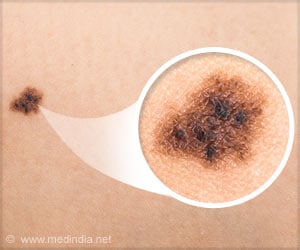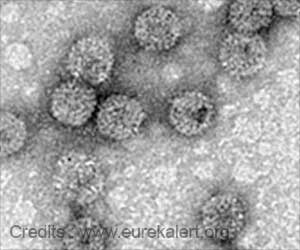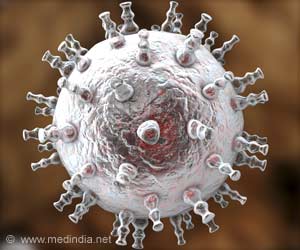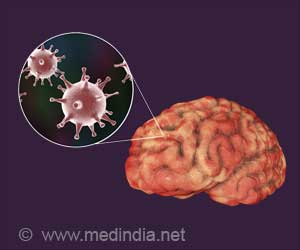- Glycoprotein complex gH/gL/gQ1/gQ2 is an effective candidate for HHV-6B vaccine
- Immediate need for HHV-6B vaccine as there are currently no treatments for HHV-6B infection in infants
- The vaccine induced both humoral and cellular immunity in animal models
- The vaccine showed promising results in preventing the HHV-6B infection in animal models
The study consisted of research groups from Kobe University Graduate School of Medicine, Kobe University Hospital, Research Institute for Microbial Diseases of Osaka University, Teikyo University and the Research Foundation of Microbial Diseases of Osaka University (BIKEN Foundation).
The results were published in the journal PLOS Pathogens.
Human Herpesvirus 6B (HHV-6B) and Exanthem Subitum
HHV-6B is a virus that infects infants. It is generally passed on to infants through the saliva of family members.
HHV-6B usually causes exanthem subitum. Exanthem subitem is caused in infants around 6 months old. Symptoms include a fever above 38 degree Celsius, which is followed by a rash once the temperature returns to normal.
In most cases of exanthem subitem, the infant recovers without having any severe symptoms. However, rarely infants experience severe complications like febrile convulsions, brain inflammation (encephalitis) and encephalopathy.
Previous Research Findings That Led to Vaccine Development
Professor Mori’s research group from Kobe University Graduate School of Medicine previously discovered the role of a glycoprotein complex in HHV-6B.
The glycoprotein complex gH/gL/gQ1/gQ2 is expressed on the surface of the HHV-6B.
This complex interacts with CD314(OX40), which is a factor expressed on stimulated T cells. This interaction is key to the HHV-6B infection.
The research group is also researching to generate mice antibodies that can be used on humans.
From the findings, the research group concluded that an effective immune response against HHV-6B infection could be generated if inoculation with the glycoprotein complex induced immunity against the complex.
Methodology used for Vaccine Development
The researchers have developed a vaccine based on the HHV-6B gH/gL/gQ1/gQ2 complex. The BIKEN Foundation and Kobe University have also filed a patent for the vaccine.
The glycoprotein complex was generated by using genetic modification techniques.
The glycoprotein complex is a complicated molecule consisting of four types of protein.
A method was developed to grow the glycoprotein complex in a cultivated cell so that all the proteins are expressed at a time.
HHV-6B gH/gL/gQ1/gQ2 complexes generated via this method retained their function of interacting and binding to CD34 (OX40).
The glycoprotein complex was combined with an aluminum hydroxide adjuvant (Alum), commonly used in many vaccines. Adjuvants strengthen the immune system so that it can react efficiently against the antigen and promote more effective immunity acquisition.
Mice were inoculated with several doses of the glycoprotein complex in combination with an adjuvant, and the immunity induction was analyzed.
Research Findings
The study results confirmed that there were vaccine induced antibodies against the glycoprotein complex in the serum of mice.
The serum had also prevented HHV-6B from infecting the cells. The glycoprotein complex activated dendritic cells that induced innate immunity.
A vaccine was developed with oligonucleotide D35 which has the potential to induce cellular immunity and its transporter, the DOTAP lipid as adjuvants in addition to Alum.
This vaccine induced stronger antibody response.
After the immunity experiments, the spleen cells of the mice were extracted to investigate the glycoprotein complex.
A stronger response to the antigen was observed in the group inoculated with Alum/D35/DOTAP combination. It confirmed that cellular immunity was induced.
The further analysis had also revealed that CD4 T cells were the main responders to the antigen.
Prevention of the HHV-6B infection was also investigated by uses immune cell-humanized mice.
A humanized mouse model is when human stem cells are inserted into a mouse with an immune cell deficit. The mouse retains the human immune cells, and it acts like an animal model.
Negative control was also used for the study. The negative controls were humanized mice injected with only the adjuvant and then injected with HHV-6B. The virus proliferated internally, and many virus antigens were detected in the spleens of the negative control group. The virus did not proliferate in the mice which contained a vaccine with the glycoprotein complex. The spleen contained hardly any virus antigens.
The results demonstrate the efficiency of the vaccine, which induced immunity against HHV-6B infection in mice.
Conclusion
The results of the study are promising for the prevention of HHV-6B infection. It is also safe as it does not contain any other virus-derived molecules other than the glycoprotein complex.
Currently, many infants are given a combined inoculation which is called DPT-IPV vaccine against four diseases- D:diphtheria, P: pertussis, T: tetanus, IPV: inactivated poliovirus.
This combined vaccine is given at 3 months of age. The researchers hope the HHV-6B inoculation could be added to this vaccine.
One major problem of HHV-6B infection is the fact that the virus remains latent inside the host for their entire life. It can be reactivated and has been known to trigger various diseases.
The vaccine developed by this study offers both humoral immunity and cellular immunity. It can induce a strong immune response to HHV-6B.
The vaccine could also be used in patients undergoing hematopoietic stem cell transplants, as it has a high potential of reactivating the virus.
The researchers plan to build upon the results, collect more data on the effectiveness of the vaccine and the safety of the vaccine and finally proceed to clinical trials.
They aim to bring an HHV-6B vaccine developed in Japan to the world.
Source-Medindia












